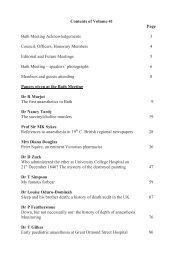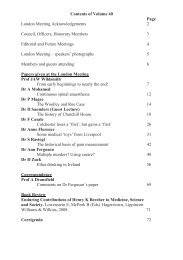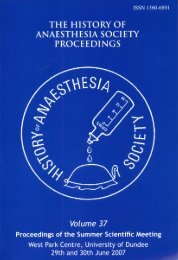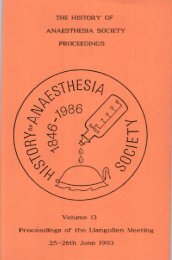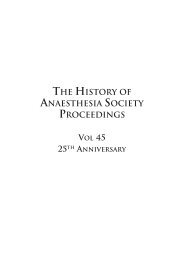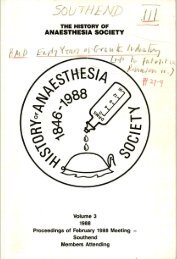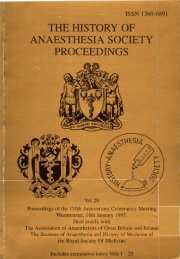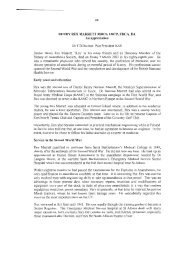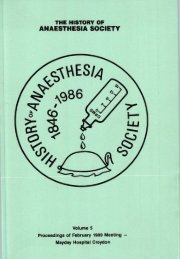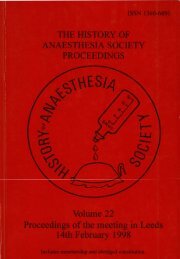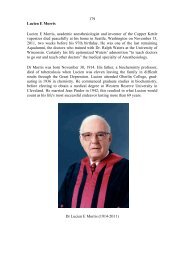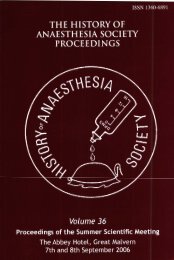3 - History of Anaesthesia Society
3 - History of Anaesthesia Society
3 - History of Anaesthesia Society
Create successful ePaper yourself
Turn your PDF publications into a flip-book with our unique Google optimized e-Paper software.
Drs C.J.Niemegeers & F Awouters (~eerse, ~elgium)<br />
Janss~~n Reaea~xh has contri'xltsd t.r, anaesthesia mainly by introdllcing<br />
ptent and safe analqesics and neuroleptics. T'le developnent<br />
<strong>of</strong> tllesa corrrpou~ds started 37 years ago, when Paul Janssen evaluated the<br />
ph3m~coloqical activity <strong>of</strong> new mlscules chemically related to<br />
pethidine. It w.3~ t+ Stdrt <strong>of</strong> extensive studies on structure-activity<br />
relationship which led to very rptent and selective camp3unds providhq<br />
gieater clinical efficacy and safety (Figure 1).<br />
Figure 1. Pethidine-related ilevelopnent <strong>of</strong> potent ,Janssen<br />
narcotics and neuroleptics<br />
Early developtent <strong>of</strong> drugs<br />
Via the rmich base, th? propioah..nune R951 was synthesised and further<br />
elaborated to very ptent and specific narcotics and neuroleptics. When<br />
the 3-carbn bridge wss shortend to an ethyl group, narcotic activity<br />
increased; .3ul3?tituents on carbon 4 <strong>of</strong> the pipxidine ring were varied<br />
extensively to end up for optimal activity with the propioanilide group<br />
<strong>of</strong> fentanyl. Men tne 3-carbon bridge was length~n~rl by one methylene<br />
group as in the first butyrophznone, RllS7, neuroleptic activity



